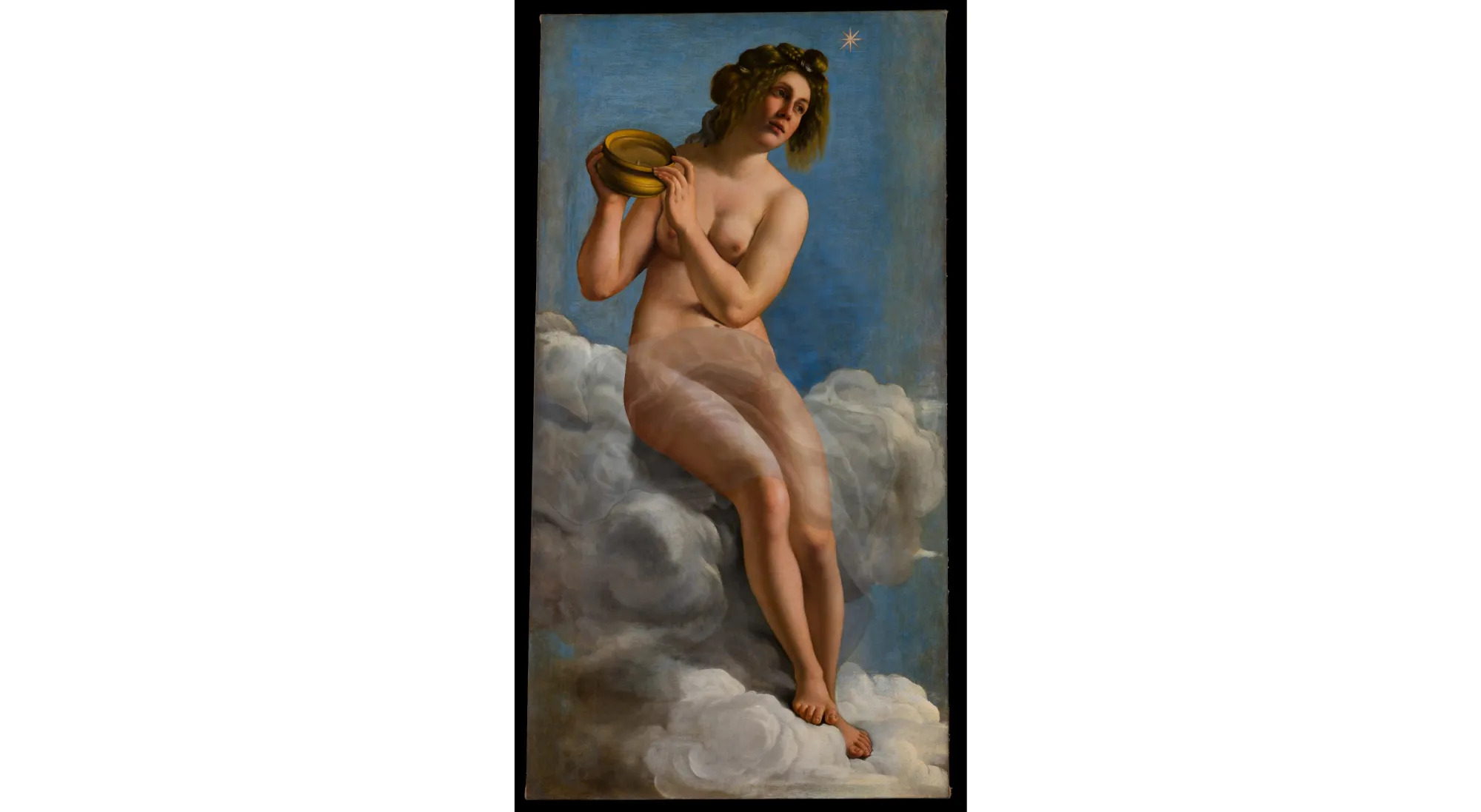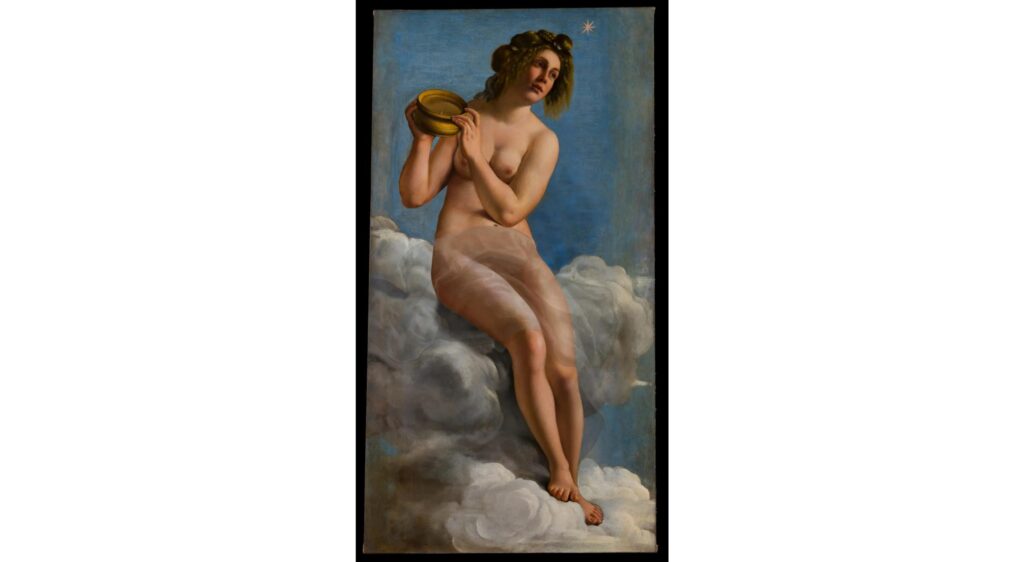
A new exhibit is showing the original version of Artemisia Gentileschi‘s painting Allegory of the Inclination after it was censored for its nudity more than 300 years ago.
The Italian Baroque artist was first commissioned by Michelangelo Buonarroti the Younger, the nephew of Renaissance master, in 1618 to contribute a work to Casa Buonarroti. The portrait of the female nude holding a compass was installed on the ceiling of the palace in Florence, Gentileschi’s first commission in the city. However, in 1684, Michelangelo’s great-nephew, Leonardo da Buonarroto, hired Baldassarre “Il Volterrano” Franceschini to add blue drapery and veils to the Gentileschi’s work “to preserve the modesty of the female inhabitants of the house.”
Gentileschi’s original composition was revealed through the year-long Artemisia UpClose project, which used digital imaging technology and other scientific tools to study the painting and restore it.
“The possibility of ‘unveiling’ this figure virtually, revealing the image originally painted by Artemisia turned an ‘ordinary’ restoration into a quest to discover the woman behind the veils,” Calliope Arts co-founder Wayne McArdle said in a statement. The London and Florence-based nonprofit foundation co-sponsored the Artemisia UpClose project in partnership with English art collector and philanthropist Christian Levett.
The project unveiled the artist’s original vision virtually, not physically, for two reasons.
“First, the removal of the thick layers of oil paint applied by Il Volterrano less than five decades after the original could put Artemisia’s delicate glazes just underneath the over-paint at risk,” head conservator Elizabeth Wicks said in a statement. “Second, the veils were applied by an important late Baroque artist and are now part of the painting’s history.”
As a result of this strategy, restoration scientists reviewed the painting at the nanometer level, using a reflectograph to observe the Gentileschi’s pentimenti, or the points at which the artist changed her mind, as well as an x-ray to peer through the white lead pigment covering the figure’s thighs. Chemical analysis also showed how sparingly Gentileschi used the pigment lapis lazuli.
The restoration work revealed the figure’s navel, which had not been visible before, as well as a fingerprint on the figure’s calf. “The fingerprint was made when the original paint was wet, and it is highly likely that of Artemisia herself,” said Wicks, who made the discovery.
The original composition of the artist’s artwork is the star of Casa Buonarroti’s exhibition “Artemisia in the Museum of Michelangelo,” which opened on September 26. The project is also the subject of a new English-language book published by Florentine Press, a series of publications in Italian entitled “Buonarrotiana” (2023), as well as a series of lectures.
“We want to make Artemisia Gentileschi a household name and to generate interest in her groundbreaking artworks. Artemisia is the ‘gateway drug’ for early women artists,” Calliope Arts cofounder Margie MacKinnon said in a statement. “Her backstory is so dramatic, her paintings so powerful and her accomplishments so impressive, people wonder, ‘Why haven’t I heard of her before, and who are the other women artists I need to learn about?”


